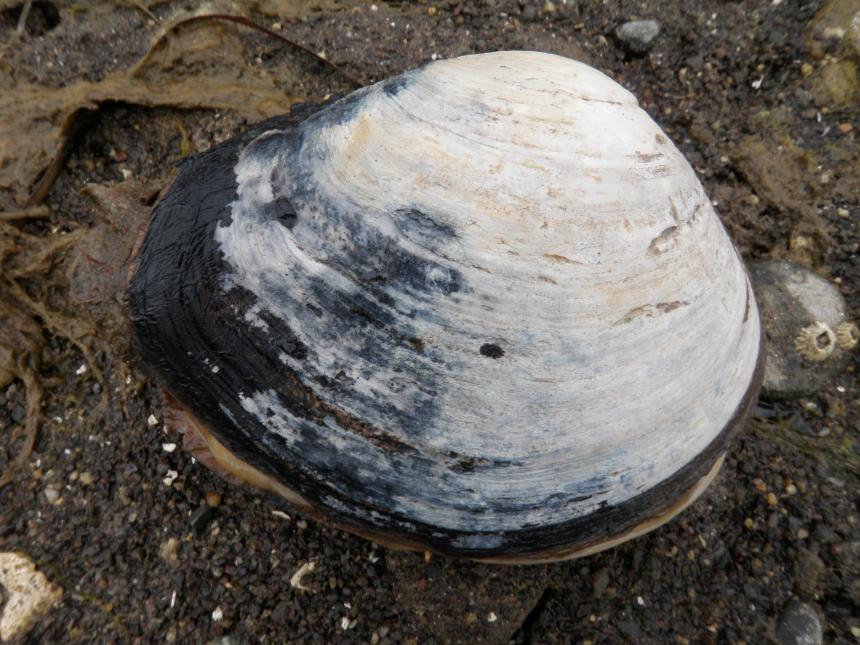Clams can be dug by hand or hand-operated fork, pick, rake, or shovel. Each digger must use a separate container to retain catch. Digging equipment may be shared. Clam holes must be refilled. To reduce clam mortality, please push any undersized clams into the refilled hole. Caution: Always check the local biotoxin status before harvesting via the biotoxin hotline (1-800-562-5632) or www.doh.wa.gov/shellfishsafety.
Description and Range
Physical description
The Fat gaper (Tresus capax) has an oval shell, with the length typically 1½ times the height. The ventral side, opposite the hinge, is more deeply rounded than that of the Pacific gaper (Tresus nuttallii). It has a wide hole where the siphon (neck) extends from the shells. Horse clams are not able to fully retract their siphon into their shells. The tip of the siphon has leather-like plates, often with algae or barnacles attached to them. The Fat gaper (T. capax) typically hosts 1 or 2 pea crabs and emits a stream of water when exposed and disturbed at low tide.
The Fat gaper (T. capax) is is buried 1 to 2 feet deep in the mid to low intertidal zone in sandy or gravel and cobble substrate, and extends into the subtidal.
Geographic range
This species of horse clam is found from Cook Inlet, AK south to Oceano, CA.
Regulations
Licenses and permits
Anyone digging for clams in Washington must have a valid license that includes shellfish harvest. See the Sportfishing Rules Pamphlet for more information, or visit a license dealer.
Rules and seasons
No minimum size. Daily limit is first 7 clams dug, regardless of size or condition. Broken clams count towards daily limit.
Recreational clam seasons are beach-specific and may change annually. Check this year’s seasons here: Public clam, mussel, and oyster beaches. Always check the DOH biotoxin status before harvesting.
